Want fast, effective, natural pain relief?
Wild lettuce is a potent painkiller and sedative that checks all the boxes.
Once you dual-extract it into a resin, you’ve got a bona fide medicinal powerhouse on your hands — but there’s one problem. This gummy, tar-like resin is incredibly inconvenient to dose and ingest.
Crafting the resin into a tincture solves that problem. Read on to learn how to make a wild lettuce tincture the smart way, including tips on storage and effective dosing for pain relief at any time.
Materials to Make Wild Lettuce Tincture
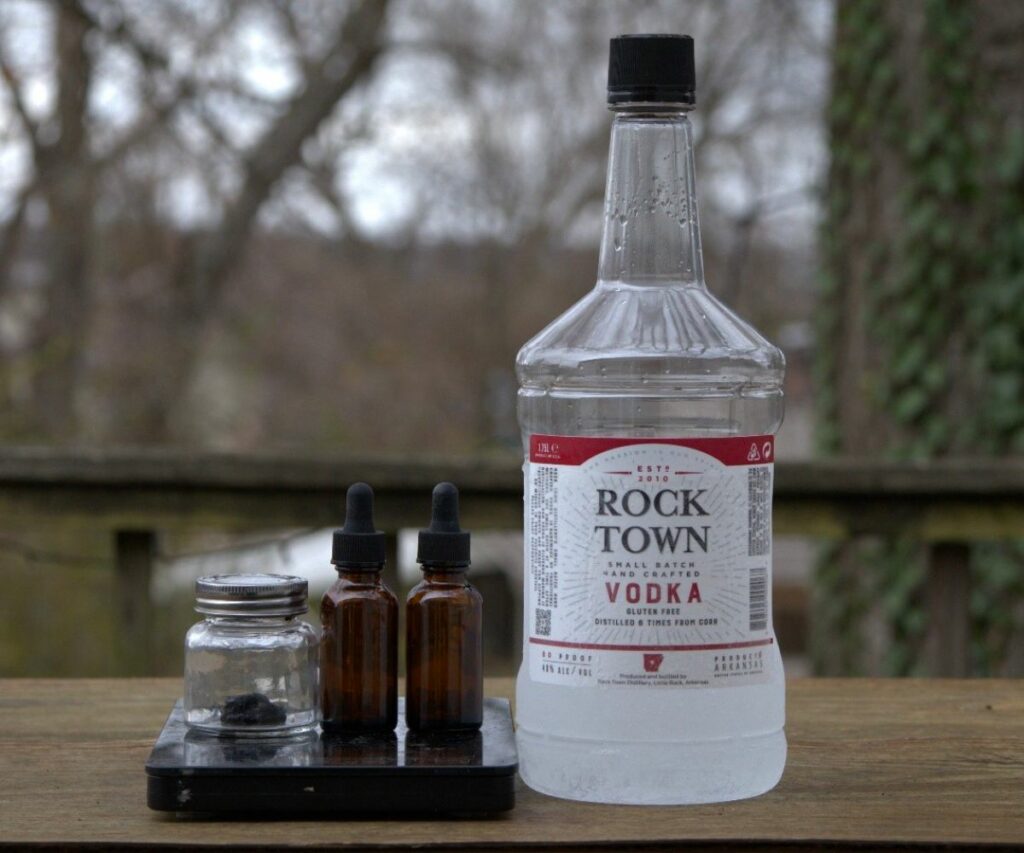
The most challenging part of working with this plant is making the resin. We’ve broken down the steps to making wild lettuce extract in a previous article. Once you’ve done that, creating the tincture will seem like a cakewalk!
Here’s what you’ll need to get started:
- Wild lettuce extract: Start with a chunk of sticky, black wild lettuce extract resin.
- Alcohol: Use a 40% ABV alcohol of your choice. I prefer clear vodka, but you can get creative with it. Whiskey, gin, and tequila are also fine choices but avoid flavored or sugary alcohol.
- Kitchen scale: You’ll need to measure your alcohol and extract to determine the weight-to-volume ratio for dosing. Digital scales are the easiest here!
- Dark glass bottles: Bottling your tincture in opaque glass is the most sensible option. I use Eternal Moment amber bottles, which come with dropper caps and are helpful for dosing.
How to Make a Wild Lettuce Tincture
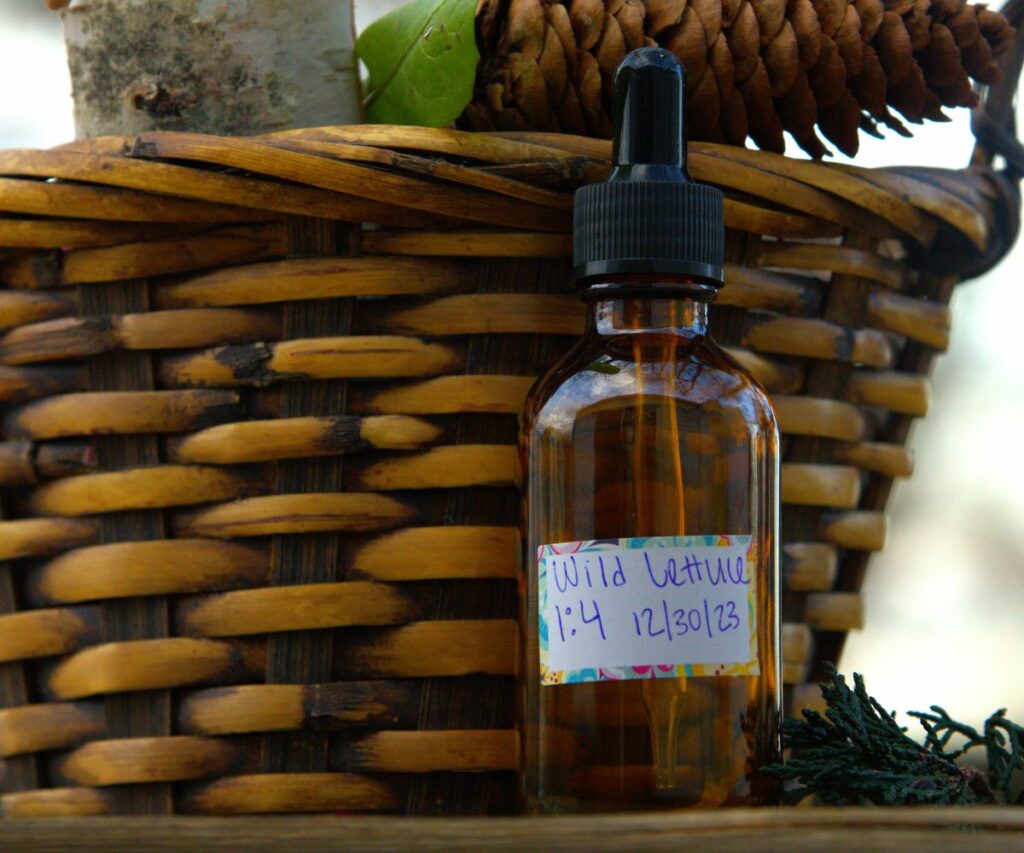
1. Determine Your Ratios
The ratio of resin to alcohol in your tincture will affect its potency. The less alcohol you add, the stronger the medicine.
Is determining a specific ratio really that important? Yes. When working with wild lettuce, knowing your ratio (and using the same one every time you make a batch of tincture) is essential because it’s the only way to ascertain an effective dose over time.
Figuring out a ratio can seem daunting if you’ve never worked with them before, but it’s pretty simple. Just remember that we express ratios numerically, with plant parts first and solvent parts second.
For example, a ratio of 1:2 would mean you have one part plants for every two parts alcohol, while a ratio of 1:10 means you have one part plants for every ten parts alcohol.
So, which ratio is right for you? It’s highly personal. The best choice depends on your desired effect and your tolerance for the plant.
Consuming too much wild lettuce can leave you exhausted, woozy, or nauseous. On the other hand, consuming too little will have no effect at all.
I find that anything weaker than a 1:4 ratio doesn’t help me, and stronger ratios give me an upset stomach. Since it’s my sweet spot, I recommend a 1:4 ratio to anyone trying it for the first time.
2. Measure Resin and Alcohol
Place a mason jar on the scale and tare it, then add your resin to see its weight in grams. This number allows us to calculate how much alcohol to add to the tincture. I have about nine grams here, so we’ll use that as an example.
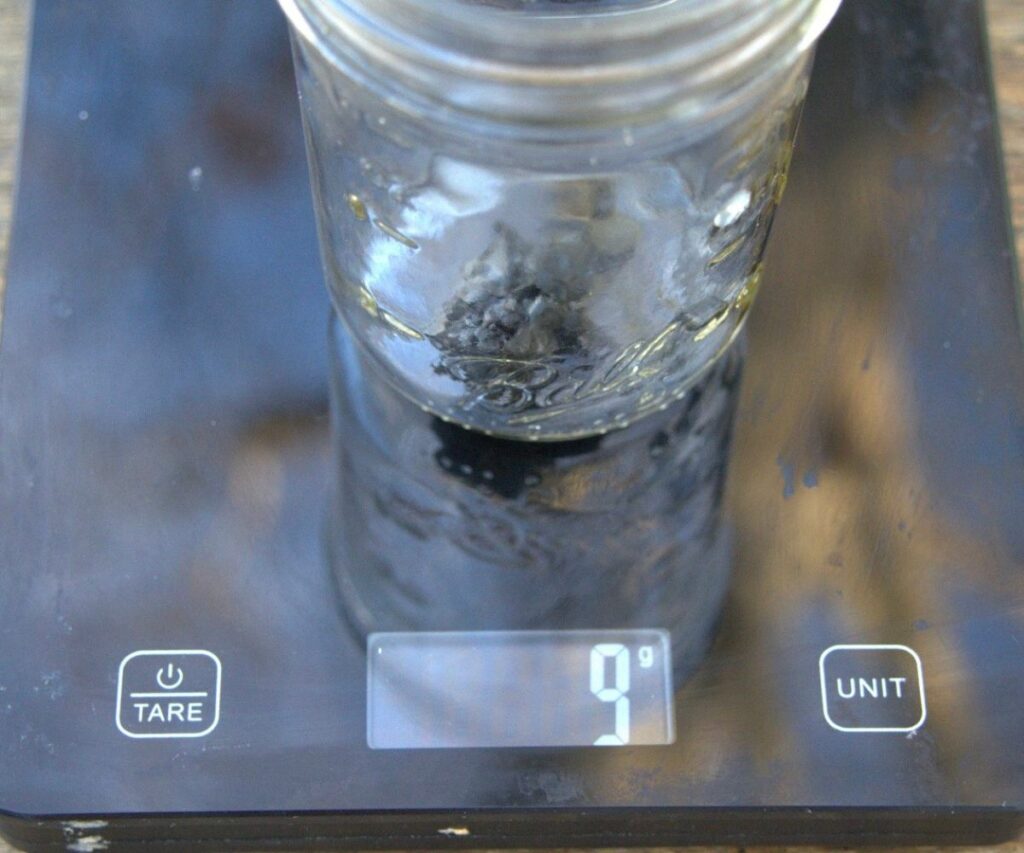
For a 1:4 ratio, we need four times the amount of alcohol that we have of resin. We can calculate the weight-to-volume conversion using the formula below:
(G x 4) = mL
Plugging in our numbers: (9 x 4) = 36
According to the formula, I need 36 milliliters of alcohol to make a 1:4 tincture.
You can plug in whatever number you have to the above formula but don’t change the units of measurement. After your calculations, measure out the appropriate amount of alcohol.
I suggest taring your scale, switching the units to milliliters, and adding your alcohol straight to the resin jar. That way, it begins to dissolve the resin immediately.
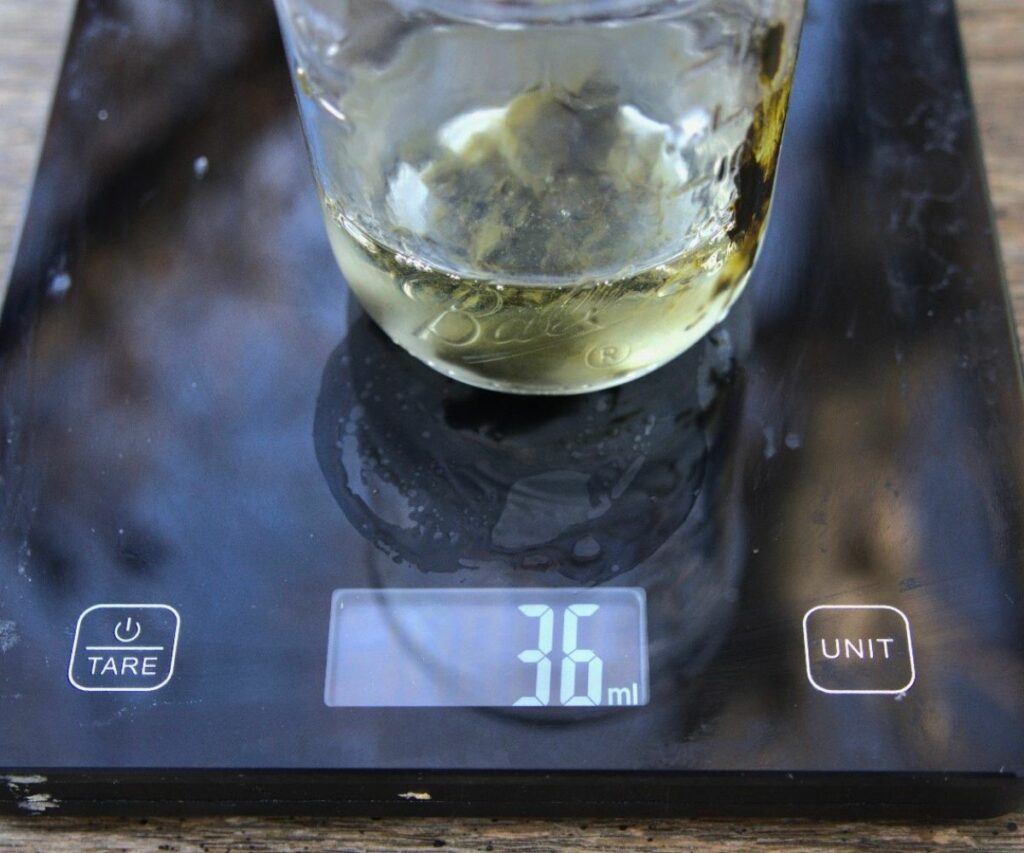
3. Combine Alcohol and Extract
Upon pouring the alcohol into your jar, the resin should begin to dissolve and cloud the liquid. However, it won’t dissolve fully on its own.
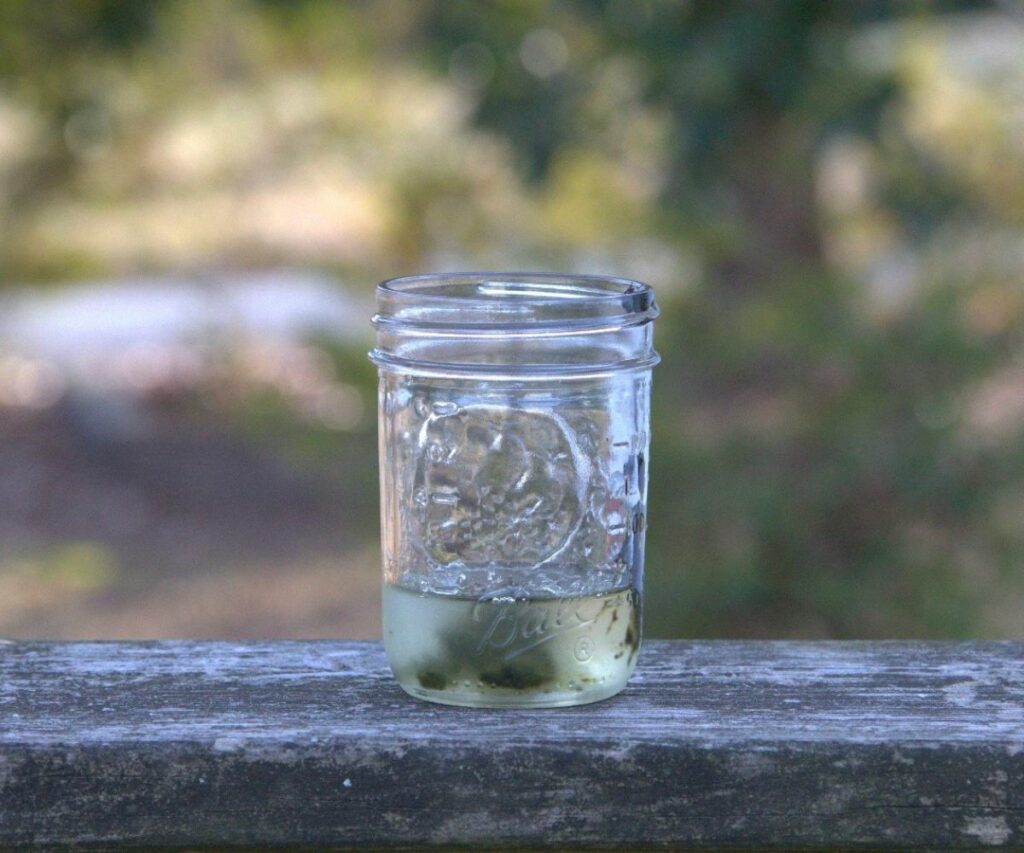
To homogenize the mixture, stir it with a spoon. Scrape the resin from where it has stuck to the insides of the jar and agitate it to encourage dissolution.
You can even top the jar and shake the whole thing by hand. When finished, the liquid should be a cloudy brownish color.
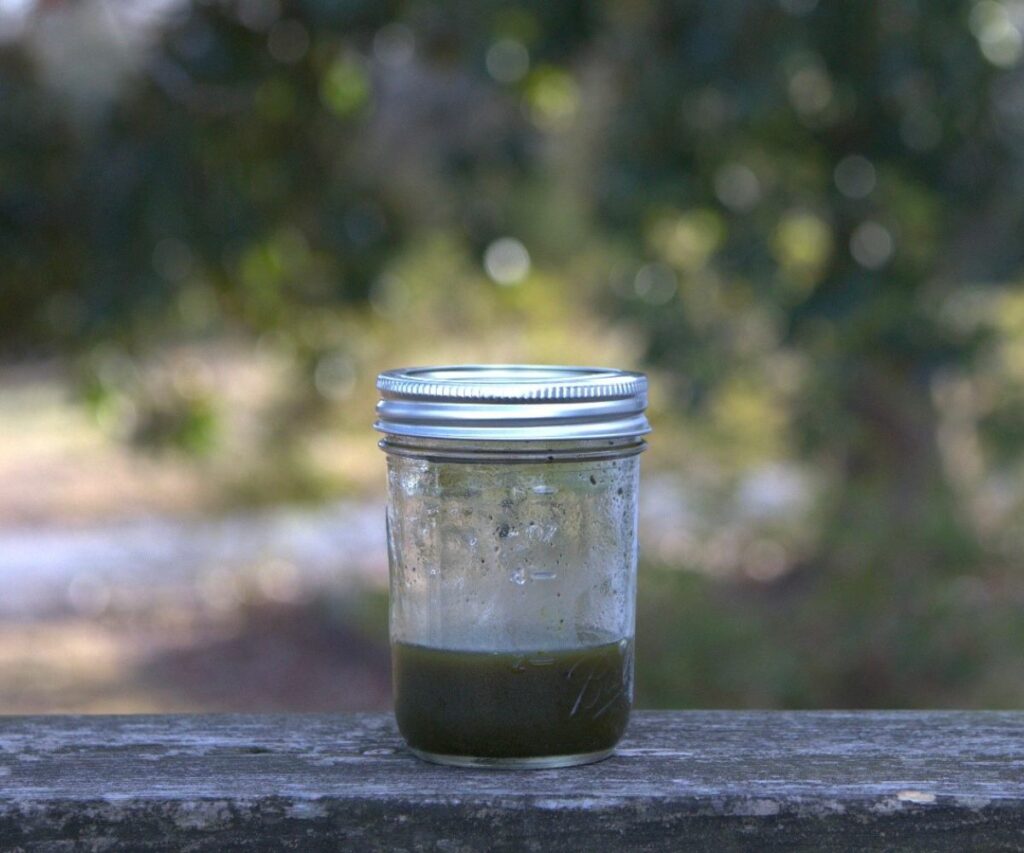
Make sure you’re using 40-proof alcohol here. Some compounds are water-soluble, and some are alcohol-soluble, so this proof is the sweet spot for boosting bioavailability while keeping the wild lettuce tincture shelf-stable.
Sometimes, you can run into issues combining the resin and alcohol. This happens during cold snaps or if you over-dehydrate the resin itself.
If you’re having trouble getting the resin to dissolve, heat the mixture on the stovetop and stir gently to encourage the process.
4. Bottle Appropriately
Bottling your tincture in dark blue, black, or amber glass is the best choice.
Glass doesn’t leach chemicals into the medicine, maintaining integrity and ensuring a clean product. Meanwhile, darker colors will protect your medicine from UV degradation and preserve it longer.
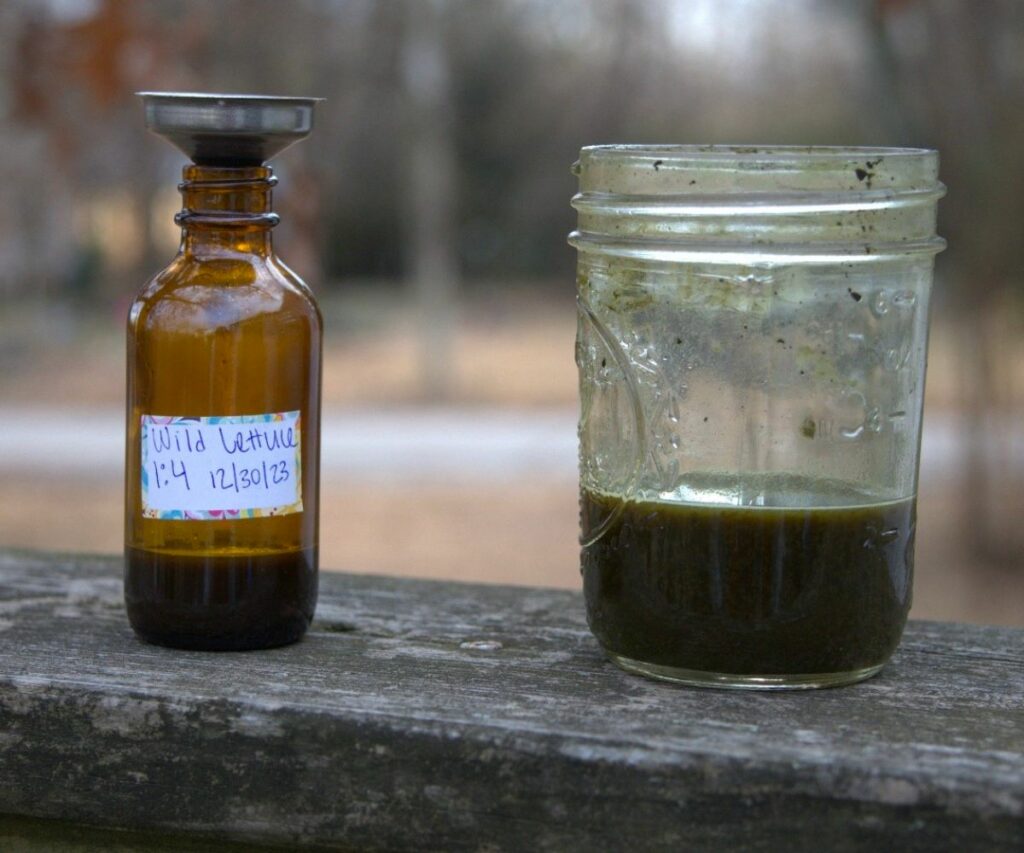
5. Store Properly and Enjoy
Put your wild lettuce tincture in a dark, cool corner of your apothecary. Be sure to keep it out of reach of children or curious pets.
In animal trials, wild lettuce’s constituent chemicals have been shown to slow brain function and induce sleep. While this is incredibly helpful in many cases, you don’t want anybody using it unsupervised. Like ghost pipe tincture, wild lettuce has the potential for toxicity.
When stored correctly, your tincture should last up to five years. Unfortunately, mine never lasts that long. It’s my go-to for pain relief, surpassing willow bark and other homemade painkillers by a mile.
Determining Dosage of Wild Lettuce Tincture
To date, there has been no research on the effect of wild lettuce tincture in humans. Because of this, it is not approved by the FDA, and there are no standard doses.
In animal lab testing, wild lettuce extracts were proven effective at 2 mg/kg for sedation and 15 mg/kg for pain relief.
If you weigh 150 pounds and have a bottle of wild lettuce tincture at a 1:4 ratio, you would need to take about 30 ml for pain relief and 4 ml for sedative effects.
These numbers imply that effective pain relief must come with sedation.
In my experience, this is true. Have respect for the potential sedative effects. Do not take wild lettuce tincture before operating heavy machinery, driving, or other potentially dangerous activities.
Wild lettuce tincture dosages are highly personal. You might have to use more to get the same effects as lab rats in the studies, but you might also get stronger effects with smaller numbers.
Everyone is different. It’s always best practice to start small with a single milliliter. Wait an hour to gauge your reaction, working up to a functional dose as needed.
Ready to get started? When you turn that black ball of resin into a bona fide wild lettuce tincture, you’ll have fast-acting pain relief at your fingertips. Harvest wild lettuce in season or grow it indoors to craft concoctions for your plant-based pharmacy whenever you want!



But what about the resin. I bought 14 grams of 50x wild lettuce resin. So straight up that would be 56ml of 40 proof alcohol. The resin comes in different strengths, for lack of a better term. What does the 50x mean and how does that factor in?
Hi Bob,
I’m not sure where you bought resin from, but I’ve never heard of it coming in different strengths. You should reach out to your seller.
Can this tincture be sprayed on topically for pain? I made a teasel/hops tincture that I use topically that works well for even sciatic an diabetic nerve pain…was wondering if the wild lettuce can do the same topically, since I can grow and harvest it it so much easier than teasel roots. Thank you so much for your wonderful explanation on the steps needed to make the extract…
Hi Patty,
In my experience, wild lettuce does not work as a topical.
I will try this since I have way too many aches and pains that over the counter pain meds don’t touch. You wrote an article on how to make tincture and I’ve located wild lettuce so I’m ready to try it out. I will let you know how it works.